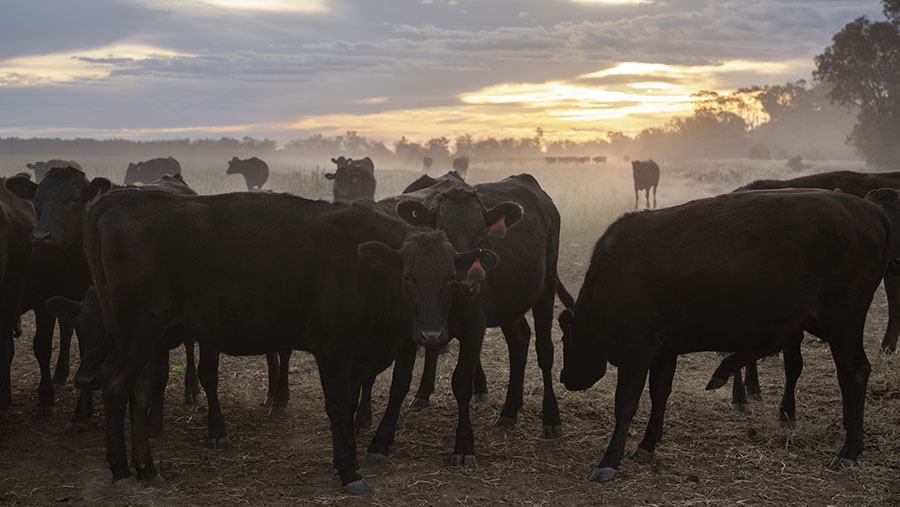Australian beef giant grows 13% to 433,000 cows
 Westholme Wylarah full-blood Wagyu © AACo
Westholme Wylarah full-blood Wagyu © AACo With the UK-Australia free-trade deal due to come into force on 31 May, more than doubling the permitted volume of Australian beef allowed into the UK, one of the country’s most powerful beef integrators is gearing for growth.
The Australian Agricultural Company (AACo) now runs a herd of more than 430,000 cows after a year of herd rebuilding, European sales growth, and surging profits, which grew 35% in 2022 to £36m.
See also: Large loads of cattle make 520p/kg as carcass weights drop
Australian commentators say the beef giant has shrugged off cost-of-living and inflationary pressures to post strong profit figures and cash in on the rise in beef prices.
Along with a healthy balance sheet, profit figures, and efficiency savings, the company noted a bright outlook, citing the following positive trends:
- Exceptional wet season across the firm’s properties has led to strong pasture growth
- Recent herd liquidation in US and Korea
- Brand growth and production both headed in the right direction. Asian and US branded sales were up 13% and 22%, respectively, and Wagyu sale values were up 17%.
How big is the Australian Agricultural Company?
- Operates more than 6.5m hectares of land
- Based in Queensland and Northern Territory
- Runs integrated cattle production
- 19 owned cattle stations and two feedlots
- Three leased stations and one leased farm
- Established in 1824 with the granting of 1m hectares of land by a British parliament crown grant
UK Australia deal – mixed views
Sections of the UK beef industry have been hugely nervous about the prospect of more Australian beef further pressuring a suckler cow herd that has shrunk 16.5% since 2005 to 1.46 million cattle.
Year one of the recently signed trade deal allows 10,000t of beef imports into the UK, compared with the 905t (fresh and frozen) imported in 2022.
Farmer concern is mounting, with the NFU warning back in February that the deal had little to offer UK farmers and would “completely liberalise” Australian imports for beef and lamb after 10 years.
But National Beef Association chief executive Neil Shand has played down the negative effect of the trade deal, adding that the volume of incoming beef was likely to be limited by distance.
He underlined the following facts:
- Australian imports will most likely displace other imports, should they start to increase significantly
- Australia has emerging markets much closer to home (Pacific Rim and China)
- Six major UK supermarkets have British pledges for beef sourcing
- The UK imports about 300,000t of beef annually (302,622 last year, AHDB)
- In comparison, the 10,000t Australia can ship in the first year is relatively small
- Australia has been able to import 4,669t into the UK through the Hilton Quota agreement with the EU. Last year only 906t of product was shipped.
